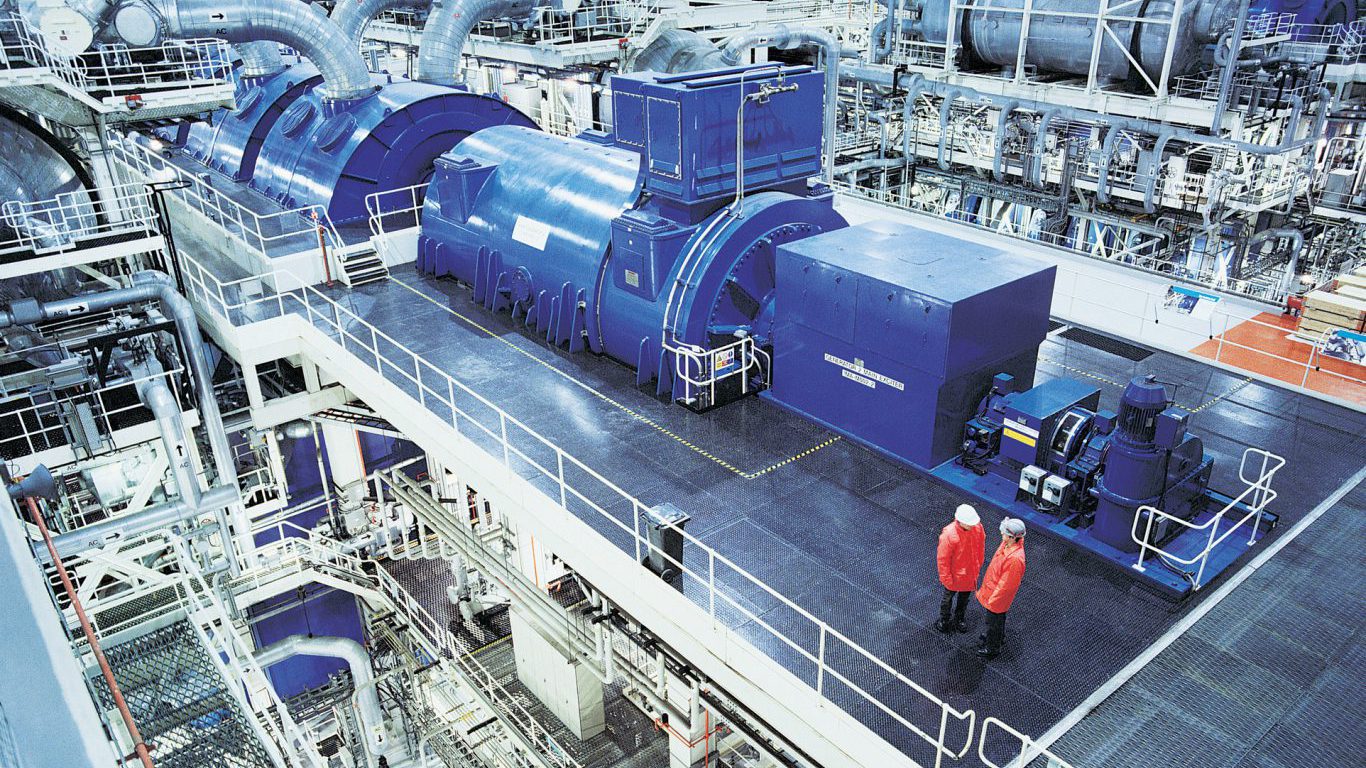
Americans weigh many factors when they seek employment — good benefits, vacation time, work-life balance, stimulating work environment, and a job that has meaning to society. For many, though, salary is the dominant consideration.
The average working American earns $53,490 a year, but there are dozens of jobs where the average salary is more than twice that.
24/7 Wall St. reviewed average annual salaries for over 800 occupations from the Bureau of Labor Statistics to identify the 79 jobs with six-figure average salaries.
Not surprisingly, many of the jobs on this list are in health care. More than one-fourth of all six-figure jobs on this list are related to medicine, including nine of the top 10 highest paying jobs. Salaries are high in that sector in part to compensate for the substantial investment of time and money required to obtain the needed education and experience. These jobs are among the 19 occupations the BLS forecasts will grow by a double-digit percentage for the 10-year period ending in 2028.
Other jobs on this list are executive or management positions typically held by those who have been working in the same career for years and who have been steadily ascending to the highest ranks in their organization.
Often, jobs with difficult conditions and long hours pay higher salaries. High-pressure jobs where lives are on the line, such as air traffic controllers, also pay high salaries. Difficult or dangerous jobs do not always guarantee high pay, however. For example, many of the careers on this list of the worst jobs in America are both very demanding and relatively low paying.
All but four of the jobs on this list — nuclear power reactor operators, commercial pilots, transportation managers, and air traffic controllers — require at least a four-year college education, and many require doctorate degrees or other additional certification. While they do not tend to pay six figures, many other high-paying jobs do not require a college education. These are the highest paying jobs you can get without a college degree.
Click here to see the 79 jobs with six figure salaries

79. Administrative law judges, adjudicators, and hearing officers
> Avg. annual wage: $100,230
> 10% of workers earn less than: $45,970
> Typical entry-level edu. required: Doctoral or professional degree
> Total employment: 14,380
> Projected employment chg. 2018-2028: +1.7%
Judges and hearing officers oversee the legal process in courts. All are employed by federal or local governments, and usually have a law degree or have worked as lawyers.
[in-text-ad]

78. Education administrators, kindergarten through secondary
> Avg. annual wage: $100,340
> 10% of workers earn less than: $63,070
> Typical entry-level edu. required: Master’s degree
> Total employment: 271,020
> Projected employment chg. 2018-2028: +4.1%
Education administrators coordinate the academic and administrative activities of children from kindergarten through secondary schools. To reach this job level, an administrator must typically have a master’s degree.

77. Materials scientists
> Avg. annual wage: $100,430
> 10% of workers earn less than: $51,950
> Typical entry-level edu. required: Bachelor’s degree
> Total employment: 6,710
> Projected employment chg. 2018-2028: +3.0%
Materials scientists study the atomic and molecular composition of substances and analyze the ways in which they interact. The job requires people to have a bachelor’s degree, though a master’s or Ph.D. is needed to do research work.
76. Nuclear power reactor operators
> Avg. annual wage: $100,990
> 10% of workers earn less than: $74,520
> Typical entry-level edu. required: High school diploma or equivalent
> Total employment: 5,050
> Projected employment chg. 2018-2028: -15.5%
Nuclear power reactor operators control nuclear reactors. The majority of the jobs, which require a high school diploma, extensive on-the-job training, and a license, can be found in seven states — Illinois, New York, Tennessee, Louisiana, Michigan, Pennsylvania, and North Carolina. Unlike most high-paying jobs on this list, the job outlook for nuclear power reactor operators is not favorable.

75. Physics teachers, postsecondary
> Avg. annual wage: $101,110
> 10% of workers earn less than: $49,690
> Typical entry-level edu. required: Doctoral or professional degree
> Total employment: 13,780
> Projected employment chg. 2018-2028: +6.5%
Physics teachers on the postsecondary level teach classes that pertain to the laws of matter and energy. Typically physics teachers need a doctoral or professional degree to teach at the postsecondary level.

74. Political science teachers, postsecondary
> Avg. annual wage: $102,290
> 10% of workers earn less than: $44,340
> Typical entry-level edu. required: Doctoral or professional degree
> Total employment: 15,750
> Projected employment chg. 2018-2028: +7.6%
Political science teachers teach about the development of political systems. To teach in a postsecondary institution, political scientists need to have a master’s or doctorate in political science or public administration, or a related field.

73. Atmospheric, earth, marine, and space sciences teachers, postsecondary
> Avg. annual wage: $102,690 sb
> 10% of workers earn less than: $47,660
> Typical entry-level edu. required: Doctoral or professional degree
> Total employment: 11,020
> Projected employment chg. 2018-2028: +4.3%
Atmospheric, earth, marine, and space sciences teachers instruct classes on the physical sciences, other than chemistry and physics. These positions usually require a doctoral or professional degree on the postsecondary level.
[in-text-ad-2]

72. Commercial pilots
> Avg. annual wage: $102,870
> 10% of workers earn less than: $45,480
> Typical entry-level edu. required: High school diploma or equivalent
> Total employment: 37,830
> Projected employment chg. 2018-2028: +7.7%
Commercial pilots fly fixed-wing aircraft or helicopters. Besides needing a high school diploma, commercial pilots must have a commercial pilot certificate and on-the-job training.

71. Transportation, storage, and distribution managers
> Avg. annual wage: $103,320
> 10% of workers earn less than: $55,850
> Typical entry-level edu. required: High school diploma or equivalent
> Total employment: 132,040
> Projected employment chg. 2018-2028: +5.6%
Transportation, storage, and distribution managers plan and supervise transportation, storage, or distribution activities that comply with government laws and regulations. The occupation requires a high school diploma or equivalent. The job includes logistics managers.

70. Electrical engineers
> Avg. annual wage: $103,480
> 10% of workers earn less than: $63,020
> Typical entry-level edu. required: Bachelor’s degree
> Total employment: 185,570
> Projected employment chg. 2018-2028: +4.8%
Electrical engineers research, design, develop, and oversee the manufacturing and installation of electrical equipment, components, or systems for use in commercial, industrial, military industries as well as for scientific use. Electrical engineers need to have a bachelor’s degree. Employers value practical experience like internships or involvement in engineering programs.

69. Information security analysts
> Avg. annual wage: $104,210
> 10% of workers earn less than: $57,810
> Typical entry-level edu. required: Bachelor’s degree
> Total employment: 125,570
> Projected employment chg. 2018-2028: +31.6%
Information security analysts plan security measures to protect an organization’s computer networks and systems. Most information security analyst jobs require a bachelor’s degree in a computer-related field. With a projected jobs increase of almost 32% over the 10-year period ending 2028, the outlook for information security analysts is the strongest of any job on this list.
[in-text-ad]

68. Veterinarians
> Avg. annual wage: $104,820
> 10% of workers earn less than: $58,080
> Typical entry-level edu. required: Doctoral or professional degree
> Total employment: 74,540
> Projected employment chg. 2018-2028: +18.4%
Veterinarians care for the health of animals. Veterinarians must have a doctor of veterinary medicine degree from an accredited veterinary college, and also a state license, in order to practice. The projected job increase for veterinarians over the 10-year period ending 2028 is more than 18%.

67. Construction managers
> Avg. annual wage: $105,000
> 10% of workers earn less than: $56,140
> Typical entry-level edu. required: Bachelor’s degree
> Total employment: 293,380
> Projected employment chg. 2018-2028: +9.8%
Construction managers plan, budget, and supervise construction projects. The job requires much time in the field and construction managers work long hours to manage projects. Construction managers typically must have a bachelor’s degree, and increase their management expertise via on-the-job training.

66. Business teachers, postsecondary
> Avg. annual wage: $105,440
> 10% of workers earn less than: $39,470
> Typical entry-level edu. required: Doctoral or professional degree
> Total employment: 83,920
> Projected employment chg. 2018-2028: +14.7%
Business teachers teach classes in business administration and management, including accounting, finance, human resources, labor and industrial relations, and marketing. They require a doctorate or professional degree to teach. Like other teaching positions, business teachers will be in demand with a projected employment increase of nearly 15% for the 10-year period ending in 2028.

65. Administrative services and facilities managers
> Avg. annual wage: $106,550
> 10% of workers earn less than: $55,210
> Typical entry-level edu. required: N/A
> Total employment: 307,280
> Projected employment chg. 2018-2028: N/A
Administrative services managers plan, direct, and coordinate activities for organizations. People who have these jobs usually need to have a bachelor’s degree. The job outlook for administrative services managers is considered strong, particularly for those with expertise in preparing for emergencies.

64. Mathematicians
> Avg. annual wage: $107,280
> 10% of workers earn less than: $58,100
> Typical entry-level edu. required: Master’s degree
> Total employment: 2,630
> Projected employment chg. 2018-2028: +26.0%
Mathematicians and statisticians analyze data and try to solve problems for private science and engineering research companies where they typically work in teams. Mathematicians usually are required to have a master’s degree. The job category has a robust outlook, with a projected employment increase of 26% for the 10-year period ending in 2028, fueled by the surging volume of digital and electronic data.

63. Biochemists and biophysicists
> Avg. annual wage: $108,180
> 10% of workers earn less than: $50,620
> Typical entry-level edu. required: Doctoral or professional degree
> Total employment: 31,360
> Projected employment chg. 2018-2028: +6.3%
Biochemists and biophysicists study and analyze the chemical and physical processes of living things. They typically need a Ph.D. to work in research and development. Those with bachelor’s and master’s degrees can hold some entry-level positions.
[in-text-ad-2]

62. Geoscientists, except hydrologists and geographers
> Avg. annual wage: $108,350
> 10% of workers earn less than: $51,000
> Typical entry-level edu. required: Bachelor’s degree
> Total employment: 29,200
> Projected employment chg. 2018-2028: +5.7%
Geoscientists study the physical aspects and processes of our planet and divide their work time between offices and laboratories and working outside, known as field work, which can take them to remote locations. Geoscientists need at least a bachelor’s degree to work at most entry-level jobs.

61. Nurse midwives
> Avg. annual wage: $108,810
> 10% of workers earn less than: $69,000
> Typical entry-level edu. required: Master’s degree
> Total employment: 6,930
> Projected employment chg. 2018-2028: +15.7%
Nurse midwives are licensed health care professionals who specialize in women’s reproductive health and childbirth. They also perform annual exams, offer counseling, and write prescriptions. Nurse midwives work in hospitals, clinics, and physicians’ offices. They must have at least a master’s degree in nursing and be licensed in their state and pass a national certification exam.

60. Art directors
> Avg. annual wage: $109,600
> 10% of workers earn less than: $53,240
> Typical entry-level edu. required: Bachelor’s degree
> Total employment: 42,890
> Projected employment chg. 2018-2028: +0.9%
Art directors are responsible for the visual look of magazines, newspapers, product packaging, and movie and television productions. They typically have a bachelor’s degree in an art or design subject and have worked as graphic designers, illustrators, or photographers. Because of the decline in the publishing industry, the job outlook for art directors is not hopeful.

59. Electronics engineers, except computer
> Avg. annual wage: $110,210
> 10% of workers earn less than: $66,620
> Typical entry-level edu. required: Bachelor’s degree
> Total employment: 128,800
> Projected employment chg. 2018-2028: -0.9%
Electronics engineers design and develop electronic equipment, including broadcast and communications systems and Global Positioning System devices. Some electronics engineers who work for the federal government develop devices used in aviation, computing, transportation, and manufacturing. Those with these jobs hold a bachelor’s degree, and employers also value real-world experience such as internships
[in-text-ad]

58. Industrial-organizational psychologists
> Avg. annual wage: $111,150
> 10% of workers earn less than: $51,080
> Typical entry-level edu. required: Master’s degree
> Total employment: 630
> Projected employment chg. 2018-2028: +12.8%
Industrial-organizational psychologists apply principles of psychology to human resources, administration, management, sales, and marketing issues in the workplace. The job may include policy planning, improving worker productivity, employee testing and selection, and organizational development. People in these positions typically hold a master’s degree. Job prospects for the 10-year period ending 2028 are considered stronger than the overall job outlook.

57. Software developers and software quality assurance analysts and testers
> Avg. annual wage: $111,620
> 10% of workers earn less than: $64,240
> Typical entry-level edu. required: N/A
> Total employment: 1,406,870
> Projected employment chg. 2018-2028: N/A
Software developers create the applications or systems that run on computers. They usually have a bachelor’s degree in computer science. Their job prospects are expected to be strong to address the workplace demand for computer software.

56. Nurse practitioners
> Avg. annual wage: $111,840
> 10% of workers earn less than: $81,410
> Typical entry-level edu. required: Master’s degree
> Total employment: 200,600
> Projected employment chg. 2018-2028: +28.2%
A nurse practitioner is an advanced practice registered nurse (APRN) who has a master’s degree and completed additional training in a specialty area of medicine. They have more authority for administering patient care compared with registered nurses. As with most professions related to health care, demand for nurse practitioners will be high as the U.S. population ages.

55. Engineering teachers, postsecondary
> Avg. annual wage: $112,110
> 10% of workers earn less than: $53,030
> Typical entry-level edu. required: Doctoral or professional degree
> Total employment: 36,080
> Projected employment chg. 2018-2028: +11.2%
Engineering teachers teach classes that focus on the application of physical laws and principles of engineering for the development of machines, materials, instruments, processes, and services. They teach subjects such as chemical, civil, electrical, industrial, mechanical, and petroleum engineering. To teach on the postsecondary level, they need to have a doctorate or professional degree. The job outlook for engineering teachers is well above the national job outlook average.

54. Education administrators, postsecondary
> Avg. annual wage: $112,400
> 10% of workers earn less than: $55,320
> Typical entry-level edu. required: Master’s degree
> Total employment: 144,880
> Projected employment chg. 2018-2028: +7.0%
Postsecondary education administrators supervise student services, academics, and faculty at U.S. colleges and universities. The job typically requires a master’s degree. The job outlook for postsecondary education administrators is considered to be slightly better than the forecast for the national job average.

53. Physician assistants
> Avg. annual wage: $112,410
> 10% of workers earn less than: $72,720
> Typical entry-level edu. required: Master’s degree
> Total employment: 120,090
> Projected employment chg. 2018-2028: +31.1%
Physician assistants work with doctors and other health care workers in physicians’ offices, hospitals, outpatient clinics, and other health care locations. They typically need a master’s degree from an accredited educational program and have to hold a state license. Physician assistants will be in great demand as evidenced by the BLS projected employment outlook of greater than 31% for the 10-year period ending in 2028.
[in-text-ad-2]

52. Sales engineers
> Avg. annual wage: $112,780
> 10% of workers earn less than: $59,180
> Typical entry-level edu. required: Bachelor’s degree
> Total employment: 63,550
> Projected employment chg. 2018-2028: +5.6%
Sales engineers sell scientific and technological products or services to businesses and are required to work irregular hours to meet sales goals and client demands. Sales engineers usually need a bachelor’s degree in engineering and a thorough knowledge of the products they sell.

51. Computer network architects
> Avg. annual wage: $115,110
> 10% of workers earn less than: $64,770
> Typical entry-level edu. required: Bachelor’s degree
> Total employment: 152,420
> Projected employment chg. 2018-2028: +5.3%
Computer network architects design and build data communication networks, such as local area networks, wide area networks, and Intranets. The job typically requires a bachelor’s degree in a computer-related area. Demand for computer network architects will grow as companies enlarge their IT networks.

50. Industrial production managers
> Avg. annual wage: $115,110
> 10% of workers earn less than: $65,050
> Typical entry-level edu. required: Bachelor’s degree
> Total employment: 185,790
> Projected employment chg. 2018-2028: +0.7%
Industrial production managers supervise the daily operations of manufacturing and related plants. The job requires a bachelor’s degree and related work experience. Because of the steady decline of manufacturing in the U.S., job prospects for this field will likely be limited.

49. Medical and health services managers
> Avg. annual wage: $115,160
> 10% of workers earn less than: $58,820
> Typical entry-level edu. required: Bachelor’s degree
> Total employment: 394,910
> Projected employment chg. 2018-2028: +17.6%
Medical and health services managers coordinate the business activities of health care providers. Most people in this occupation have at least a bachelor’s degree, however, master’s degrees holders are common. As with most professions related to health care, demand for medical and health services managers will be strong as the population ages.
[in-text-ad]

48. Economists
> Avg. annual wage: $116,630
> 10% of workers earn less than: $59,450
> Typical entry-level edu. required: Master’s degree
> Total employment: 19,000
> Projected employment chg. 2018-2028: +8.1%
Economists analyze data, trends, and assess economic issues for institutions such as financial firms, universities, and think-tanks. Most need at least a master’s degree or a doctorate to perform the job. Job prospects for economists are best for those with strong analytical skills and experience using statistical analysis software.

47. Chemical engineers
> Avg. annual wage: $117,090
> 10% of workers earn less than: $66,810
> Typical entry-level edu. required: Bachelor’s degree
> Total employment: 30,120
> Projected employment chg. 2018-2028: +6.3%
Chemical engineers apply the principles of chemistry, biology, physics, and math to seek solutions that involve fuel, drugs, food, and other items. Chemical engineers must have a chemical engineering degree. They spend a good deal of time at industrial plants and refineries to monitor operations at those locations. Demand for these jobs will be about as fast as the average for all occupations for the 10-year period ending in 2028, according to BLS.

46. Economics teachers, postsecondary
> Avg. annual wage: $119,160
> 10% of workers earn less than: $51,090
> Typical entry-level edu. required: Doctoral or professional degree
> Total employment: 13,270
> Projected employment chg. 2018-2028: +7.9%
Postsecondary economics teachers teach classes in economics. There are more economics teachers in New York, 2,080, than any other state. Typically, postsecondary economics teachers must have a Ph.D.

45. Aerospace engineers
> Avg. annual wage: $119,220
> 10% of workers earn less than: $72,450
> Typical entry-level edu. required: Bachelor’s degree
> Total employment: 63,200
> Projected employment chg. 2018-2028: +1.7%
Aerospace engineers design aircraft, spacecraft, satellites, and missiles. They must have a bachelor’s degree in aerospace engineering or an engineering field or science related to aerospace systems. They also need security clearance to work for national defense. BLS projects a decrease in employment of aerospace engineers in the manufacturing industry over the 10-year period ending in 2028.

44. Personal financial advisors
> Avg. annual wage: $119,290
> 10% of workers earn less than: $42,950
> Typical entry-level edu. required: Bachelor’s degree
> Total employment: 210,190
> Projected employment chg. 2018-2028: +7.0%
Personal financial advisors provide advice to help people manage their finances and plan for their financial future. Personal financial advisors usually need a bachelor’s degree, though a master’s degree and certification can improve chances to advance. Demand for financial planning services should rise as baby boomers retire and life expectancies increase.

43. Air traffic controllers
> Avg. annual wage: $120,140
> 10% of workers earn less than: $68,330
> Typical entry-level edu. required: Associate’s degree
> Total employment: 22,090
> Projected employment chg. 2018-2028: +1.3%
Air traffic controllers monitor and coordinate the movement of aircraft to make sure they keep safe distances between them. The work is stressful, and night, weekend, and rotating shifts are the norm for this job. To be an air traffic controller, a person must be a U.S. citizen, pass medical and background checks, have an associate’s or a bachelor’s degree from the Air Traffic Collegiate Training Initiative program, and take courses at the Federal Aviation Administration academy. BLS forecasts little employment change for air traffic controllers from 2018 to 2028.
[in-text-ad-2]

42. Political scientists
> Avg. annual wage: $120,260
> 10% of workers earn less than: $60,960
> Typical entry-level edu. required: Master’s degree
> Total employment: 6,010
> Projected employment chg. 2018-2028: +5.3%
Political scientists teach about the development of political systems. They require a master’s degree or doctorate in political science, public administration, or a similar field. BLS predicts strong competition for political scientist jobs for the 10-year period ending in 2028.

41. Nuclear engineers
> Avg. annual wage: $120,700
> 10% of workers earn less than: $71,860
> Typical entry-level edu. required: Bachelor’s degree
> Total employment: 15,850
> Projected employment chg. 2018-2028: -0.5%
Nuclear engineers try to harness the energy released from nuclear reactions to benefit humankind. They work at nuclear power plants, create submarine propulsion systems, develop medical diagnostic equipment such as MRI machines, and build radioactive-waste disposal facilities. Nuclear engineers must have a bachelor’s degree in nuclear engineering. The job forecast for the occupation is for little change because many utilities are choosing cheaper natural gas for power generation.

40. Actuaries
> Avg. annual wage: $120,970
> 10% of workers earn less than: $64,860
> Typical entry-level edu. required: Bachelor’s degree
> Total employment: 22,260
> Projected employment chg. 2018-2028: +20.1%
Actuaries use mathematics and statistics to analyze and assess the financial costs of risk and uncertainty for companies. Actuaries need a bachelor’s degree and must pass a series of exams for certification. The job outlook for actuaries is much stronger than the national average for occupations, as emerging risks develop.

39. Health specialties teachers, postsecondary
> Avg. annual wage: $121,620
> 10% of workers earn less than: $44,350
> Typical entry-level edu. required: Doctoral or professional degree
> Total employment: 201,920
> Projected employment chg. 2018-2028: +23.2%
Postsecondary health specialties teachers teach courses in health specialties, in fields like dentistry, laboratory technology, pharmacy, public health, and veterinary medicine. A doctorate or professional degree is required. The job outlook for postsecondary health specialties teachers for the 10-year period ending 2028 is very strong, like other health-related occupations.
[in-text-ad]

38. Astronomers
> Avg. annual wage: $122,270
> 10% of workers earn less than: $59,420
> Typical entry-level edu. required: Doctoral or professional degree
> Total employment: 2,070
> Projected employment chg. 2018-2028: +4.7%
Astronomers study the universe and the celestial objects that are within it, such as planets, stars, galaxies, asteroids, and black holes. Astronomers typically need a Ph.D. for jobs in research and academia. Astronomy is a small field, with about 6,000 astronomers in North America, according to the American Astronomical Society, and very little growth in the occupation is forecast by the BLS.

37. Optometrists
> Avg. annual wage: $122,980
> 10% of workers earn less than: $59,200
> Typical entry-level edu. required: Doctoral or professional degree
> Total employment: 39,420
> Projected employment chg. 2018-2028: +9.5%
Optometrists diagnose and treat eye diseases, injuries, and other disorders. Optometrists must complete a doctor of optometry degree program and obtain a state license to practice. Because vision problems often happen later in life, an aging baby-boomer population will require more optometrists.

36. Computer hardware engineers
> Avg. annual wage: $123,030
> 10% of workers earn less than: $68,460
> Typical entry-level edu. required: Bachelor’s degree
> Total employment: 67,880
> Projected employment chg. 2018-2028: +6.1%
Computer hardware engineers research, design, and develop computer systems and their components. Computer hardware engineers need a bachelor’s degree. They work mostly in computer systems design services and in manufacturing. Demand for these jobs will be lower because more technological innovation occurs with software rather than with hardware.

35. General and operations managers
> Avg. annual wage: $123,030
> 10% of workers earn less than: $45,050
> Typical entry-level edu. required: Bachelor’s degree
> Total employment: 2,400,280
> Projected employment chg. 2018-2028: +6.9%
General and operations managers plan and direct the operations of public or private sector organizations and supervise various departments or locations. A bachelor’s degree for this occupation is required. Job growth for general and operations managers is expected to be spurred by the formation of new organizations and expansion of existing ones.

34. Training and development managers
> Avg. annual wage: $123,470
> 10% of workers earn less than: $64,720
> Typical entry-level edu. required: Bachelor’s degree
> Total employment: 38,510
> Projected employment chg. 2018-2028: +8.1%
Training and development managers plan, coordinate, and direct skills-enhancement programs for the staff of an organization. They are found in every industry and the job requires a bachelor’s degree. Job prospects for training and development managers should be favorable because of ongoing need for workplace training and education.

33. Pharmacists
> Avg. annual wage: $125,510
> 10% of workers earn less than: $88,400
> Typical entry-level edu. required: Doctoral or professional degree
> Total employment: 311,200
> Projected employment chg. 2018-2028: -0.0%
Pharmacists dispense prescription medications to patients and advise on their safe use. Pharmacists must have a doctor of pharmacy degree in order to work and they must also be licensed. Employment in retail pharmacies will be negatively impacted by increasing sales through mail order and online pharmacies.
[in-text-ad-2]

32. Computer and information research scientists
> Avg. annual wage: $127,460
> 10% of workers earn less than: $69,990
> Typical entry-level edu. required: Master’s degree
> Total employment: 30,780
> Projected employment chg. 2018-2028: +16.5%
Computer and information research scientists invent and design computing technology and find new uses for existing technology. Most of these jobs require a master’s degree in computer science or a related field, though for the federal government, a bachelor’s degree may suffice. BLS forecasts more than 16% employment growth in the 10-year period ending in 2028 because many companies report difficulty in finding these workers.

31. Purchasing managers
> Avg. annual wage: $128,400
> 10% of workers earn less than: $71,450
> Typical entry-level edu. required: Bachelor’s degree
> Total employment: 72,100
> Projected employment chg. 2018-2028: +3.9%
Purchasing managers oversee the work of buyers and purchasing agents, who buy products and services for organizations. Purchasing managers usually have a bachelor’s degree and several years work experience. Because of outsourcing and automation of less complex procurement functions, job prospects for this occupation are not considered strong by BLS.

30. Judges, magistrate judges, and magistrates
> Avg. annual wage: $128,550
> 10% of workers earn less than: $39,110
> Typical entry-level edu. required: Doctoral or professional degree
> Total employment: 28,670
> Projected employment chg. 2018-2028: +3.1%
Judges, magistrate judges, and magistrates apply the law by overseeing the nation’s legal process in courts. Judges usually have law degrees and have worked as lawyers. Some administrative law judge, hearing officer, and magistrate positions may require a bachelor’s degree. The BLS predicts employment of judges and hearing officers is projected to grow 3% from 2018 to 2028, which is slower than the average for all occupations.

29. Human resources managers
> Avg. annual wage: $129,570
> 10% of workers earn less than: $68,300
> Typical entry-level edu. required: Bachelor’s degree
> Total employment: 154,800
> Projected employment chg. 2018-2028: +7.1%
Human resources managers plan, coordinate, and direct the administrative functions of an organization. People who hold this job usually need a combination of education and related work experience, with some jobs requiring a master’s degree. The job outlook for human resources managers is good because companies will need them to help ensure compliance with evolving employment laws.
[in-text-ad]

28. Law teachers, postsecondary
> Avg. annual wage: $129,950
> 10% of workers earn less than: $37,600
> Typical entry-level edu. required: Doctoral or professional degree
> Total employment: 16,180
> Projected employment chg. 2018-2028: +10.3%
Postsecondary law teachers teach law classes. Most work in public and private colleges and universities, professional schools, and junior or community colleges. Employment of postsecondary teachers including law teachers is projected to grow much faster than the average for all occupations for the 10-year period ending in 2028. The majority of that increase is likely to be in part-time posts.

27. Physicists
> Avg. annual wage: $131,080
> 10% of workers earn less than: $62,470
> Typical entry-level edu. required: Doctoral or professional degree
> Total employment: 16,730
> Projected employment chg. 2018-2028: +9.5%
A physicist tries to explain how forces and phenomena affect the natural world. Most physicists need a Ph.D. for jobs in research and to work in academia. BLS expects the occupation will grow faster than the average for all occupations. However, job growth is dependent on federal spending for research at institutions of higher education.

26. Public relations and fundraising managers
> Avg. annual wage: $132,630
> 10% of workers earn less than: $64,790
> Typical entry-level edu. required: Bachelor’s degree
> Total employment: 79,160
> Projected employment chg. 2018-2028: +7.8%
Public relations managers oversee the creation of materials that enhance the public image of their employer or client. Fundraising managers coordinate campaigns that bring in donations for an organization or group. Public relations and fundraising managers need at least a bachelor’s degree. The growth of social media is a factor in the strong job outlook for public relations managers, and the need for nonprofits to raise money will boost job prospects for fundraising managers.

25. Compensation and benefits managers
> Avg. annual wage: $134,210
> 10% of workers earn less than: $69,870
> Typical entry-level edu. required: Bachelor’s degree
> Total employment: 16,900
> Projected employment chg. 2018-2028: +2.9%
Compensation and benefits managers develop and supervise programs to pay employees. This job usually requires a bachelor’s degree and related work experience. Employment of compensation and benefits managers is forecast to increase at 3% for the 10-year period ending 2028, slower than the average for all occupations.

24. Sales managers
> Avg. annual wage: $141,690
> 10% of workers earn less than: $59,810
> Typical entry-level edu. required: Bachelor’s degree
> Total employment: 402,600
> Projected employment chg. 2018-2028: +5.1%
Sales managers direct and oversee an organization’s sales teams. Most sales managers have a bachelor’s degree and have worked as a sales representative. Employment growth of these managers is about the same as other occupations and will depend on growth or decline in the industries where they work.

23. Advertising and promotions managers
> Avg. annual wage: $141,890
> 10% of workers earn less than: $61,930
> Typical entry-level edu. required: Bachelor’s degree
> Total employment: 25,100
> Projected employment chg. 2018-2028: +3.2%
Advertising, promotions, and marketing managers plan programs to create interest in products or services. A bachelor’s degree is required for most of these positions. The BLS forecast for this occupation is below the average of other occupations.
[in-text-ad-2]

22. Podiatrists
> Avg. annual wage: $142,680
> 10% of workers earn less than: $54,150
> Typical entry-level edu. required: Doctoral or professional degree
> Total employment: 9,770
> Projected employment chg. 2018-2028: +6.0%
Podiatrists provide medical and surgical treatment and care for people experiencing foot, ankle, and lower leg problems. Podiatrists must earn a doctor of podiatric medicine degree and complete a three-year residency program, and each state requires that podiatrists be licensed. Continued growth in the demand for podiatrists will come from the aging population. Podiatrists will also be needed to treat foot and ankle conditions caused by an increase in conditions such as diabetes and obesity.

21. Lawyers
> Avg. annual wage: $145,300
> 10% of workers earn less than: $59,670
> Typical entry-level edu. required: Doctoral or professional degree
> Total employment: 657,170
> Projected employment chg. 2018-2028: +6.1%
Lawyers advise and represent individuals, businesses, and government agencies on legal matters and disputes. In order to practice law, attorneys must have a law degree and pass a state’s bar examination. Competition for jobs over the 10-year period ending 2028 is expected to be strong because the number of students graduating from law school each year exceeds jobs available.

20. Natural sciences managers
> Avg. annual wage: $145,450
> 10% of workers earn less than: $66,050
> Typical entry-level edu. required: Bachelor’s degree
> Total employment: 67,720
> Projected employment chg. 2018-2028: +5.9%
Natural sciences managers oversee the work of scientists, such as chemists, physicists, and biologists. People in this occupation need at least a bachelor’s degree in a natural science or a related field and most natural sciences managers work as scientists before becoming managers. Jobs for natural sciences managers are projected to grow about as fast as the average for all occupations over the 10-year period ending 2028.

19. Financial managers
> Avg. annual wage: $147,530
> 10% of workers earn less than: $68,370
> Typical entry-level edu. required: Bachelor’s degree
> Total employment: 654,790
> Projected employment chg. 2018-2028: +16.0%
Financial managers create financial reports, direct investment activities, and develop plans for the long-term financial goals for organizations such as banks, investment firms, and insurance companies. People in this occupation typically need a bachelor’s degree and experience in another related financial occupation, such as accountant, securities sales agent, or financial analyst. Job prospects for financial managers are strong, according to BLS, with skills such as cash management and risk management expected to be in high demand.
[in-text-ad]

18. Marketing managers
> Avg. annual wage: $149,200
> 10% of workers earn less than: $71,010
> Typical entry-level edu. required: Bachelor’s degree
> Total employment: 263,680
> Projected employment chg. 2018-2028: +8.1%
Marketing managers plan programs to generate interest in products or services. A bachelor’s degree is required for most marketing management jobs and these managers usually have work experience in advertising, marketing, promotions, or sales. Employment in this occupation will continue to be essential for businesses seeking to expand.

17. Architectural and engineering managers
> Avg. annual wage: $152,930
> 10% of workers earn less than: $92,510
> Typical entry-level edu. required: Bachelor’s degree
> Total employment: 194,250
> Projected employment chg. 2018-2028: +2.8%
Architectural and engineering managers plan and coordinate activities in architectural and engineering companies. People in these jobs usually are required to have a bachelor’s degree and work experience as an architect or engineer. Employment in this field is projected to grow 3% for the 10-year period ending in 2028, slower than the average for all occupations.

16. Computer and information systems managers
> Avg. annual wage: $156,390
> 10% of workers earn less than: $87,480
> Typical entry-level edu. required: Bachelor’s degree
> Total employment: 433,960
> Projected employment chg. 2018-2028: +11.3%
Computer and information systems managers plan and oversee computer-related activities in an organization. People in this job need to have a bachelor’s degree in computer or information science as well as related work experience, and many computer and information systems managers have a graduate degree. Employment prospects for this occupation are twice the national average because businesses will expand their digital platforms.

15. Petroleum engineers
> Avg. annual wage: $156,780
> 10% of workers earn less than: $79,270
> Typical entry-level edu. required: Bachelor’s degree
> Total employment: 32,620
> Projected employment chg. 2018-2028: +2.6%
Petroleum engineers design and develop methods for removing oil and gas from the Earth. Petroleum engineers work in offices or at drilling and well sites and travel is often required. People in this field must have a bachelor’s degree in engineering, preferably petroleum engineering, though a bachelor’s degree in mechanical, civil, chemical engineering may meet employer requirements. Employment is projected to grow less than 3% for the 10-year period ending in 2028, as the fluctuating oil prices determine capital investment needs of oil companies.

14. Airline pilots, copilots, and flight engineers
> Avg. annual wage: $174,870
> 10% of workers earn less than: $74,100
> Typical entry-level edu. required: Bachelor’s degree
> Total employment: 84,520
> Projected employment chg. 2018-2028: +4.6%
Airline pilots, copilots, and flight engineers fly airplanes, helicopters, and other aircraft. Airline pilots usually need a bachelor’s degree and also must have an Airline Transport Pilot certificate that is issued by the Federal Aviation Administration. Employment for this occupation is projected to grow below the average for all occupations for the 10-year period ending in 2028.

13. Dentists, general
> Avg. annual wage: $178,260
> 10% of workers earn less than: $80,850
> Typical entry-level edu. required: Doctoral or professional degree
> Total employment: 110,730
> Projected employment chg. 2018-2028: +7.6%
Dentists diagnose and treat problems with patients’ teeth, gums, and other parts of the mouth. Dentists must be licensed in the state in which they work and graduated from an accredited dental program. The demand for dental services will grow as the population ages and as more research links oral health to overall health.
[in-text-ad-2]

12. Nurse anesthetists
> Avg. annual wage: $181,040
> 10% of workers earn less than: $127,480
> Typical entry-level edu. required: Master’s degree
> Total employment: 43,570
> Projected employment chg. 2018-2028: +17.0%
Nurse anesthetists administer anesthesia to patients, typically during surgical, diagnostic, or obstetric procedures. They work at hospitals, physicians’ offices, and clinics and hold a master’s degree. Demand for nurse anesthetists will be strong as more health care services are required for an aging population.

11. Pediatricians, general
> Avg. annual wage: $184,410
> 10% of workers earn less than: $69,940
> Typical entry-level edu. required: Doctoral or professional degree
> Total employment: 29,740
> Projected employment chg. 2018-2028: +2.2%
Pediatricians are doctors who diagnose, treat, and help prevent children’s diseases and injuries. A medical degree and a state license are required for pediatricians to practice after they complete an internship. Demand for pediatricians is predicted to lag behind overall occupation increase.

10. Chief executives
> Avg. annual wage: $193,850
> 10% of workers earn less than: $62,290
> Typical entry-level edu. required: Bachelor’s degree
> Total employment: 205,890
> Projected employment chg. 2018-2028: -5.5%
Chief executives plan strategies and policies for their company and organization. Top executives typically need at least a bachelor’s degree and extensive and accomplished work experience to become a CEO. Employment changes will vary by occupation and industry, depending on the rate of growth.

9. General internal medicine physicians
> Avg. annual wage: $201,440
> 10% of workers earn less than: $60,970
> Typical entry-level edu. required: N/A
> Total employment: 44,610
> Projected employment chg. 2018-2028: N/A
General internal medicine physicians diagnose and provide nonsurgical treatment for diseases and injuries of internal organs. Theirs is the first occupation on the list with an annual wage of more than $200,000. A medical degree and a state license are required for general internal medicine physicians to practice after they complete an internship. With an aging population and rising life expectancy, general internal medicine physicians will continue to be in demand. The Association of American Medical Colleges said this occupation will grow at a 15% pace through 2026.
[in-text-ad]

8. Family medicine physicians
> Avg. annual wage: $213,270
> 10% of workers earn less than: $85,590
> Typical entry-level edu. required: N/A
> Total employment: 109,370
> Projected employment chg. 2018-2028: N/A
Family medicine physicians diagnose, treat, and provide preventive care to individuals and families. A medical degree and a state license are required for family medicine physicians to practice after they complete an internship. There is a shortage of primary care physicians, including family physicians. The Association of American Medical Colleges predicts the U.S. will be short by up to 55,200 primary care physicians by 2032.

7. Psychiatrists
> Avg. annual wage: $220,430
> 10% of workers earn less than: $74,530
> Typical entry-level edu. required: Doctoral or professional degree
> Total employment: 25,530
> Projected employment chg. 2018-2028: +15.8%
Psychiatrists diagnose, treat, and help prevent mental disorders. A medical degree and a state license are required for psychiatrists to practice. The BLS forecasts the occupation will increase by almost 16% over the 10-year period ending in 2028.

6. Prosthodontists
> Avg. annual wage: $220,840
> 10% of workers earn less than: $96,060
> Typical entry-level edu. required: Doctoral or professional degree
> Total employment: 490
> Projected employment chg. 2018-2028: +7.3%
Prosthodontists are dental specialists who restore and replace teeth to improve the function of a patient’s mouth. Prosthodontists attend dental school and have to complete a three-year post-doctoral residency program. They also need to have a license to practice in a particular state. Certification through the American Board of Prosthodontics may help prosthodontists find jobs.

5. Orthodontists
> Avg. annual wage: $230,830
> 10% of workers earn less than: $73,490
> Typical entry-level edu. required: Doctoral or professional degree
> Total employment: 5,990
> Projected employment chg. 2018-2028: +7.3%
Orthodontists diagnose and treat dental problems and oral cavity anomalies. Orthodontists need to have a doctor of dental medicine degree or doctor of dental surgery degree in order to practice. BLS forecasts the occupation to grow above the national occupation average over the 10-year period ending in 2028.

4. Obstetricians and gynecologists
> Avg. annual wage: $233,610
> 10% of workers earn less than: $81,200
> Typical entry-level edu. required: Doctoral or professional degree
> Total employment: 18,620
> Projected employment chg. 2018-2028: +2.3%
Obstetricians and gynecologists provide care related to pregnancy, childbirth, and the female reproductive system. Obstetricians and gynecologists must earn either a doctor of medicine, degree or a doctor of osteopathic medicine and complete a one-year general medical residency before entering a post-graduate obstetrics and gynecology training program. The job outlook for the occupation is below the national occupation average.
[in-text-ad-2]

3. Oral and maxillofacial surgeons
> Avg. annual wage: $237,570
> 10% of workers earn less than: $65,360
> Typical entry-level edu. required: Doctoral or professional degree
> Total employment: 4,650
> Projected employment chg. 2018-2028: +7.4%
Oral and maxillofacial surgeons are dental specialists trained to treat diseases, injuries and defects in the head, neck, face, jaws and the hard and soft tissues of the oral and maxillofacial region. They are also trained to administer anesthesia. Oral and maxillofacial surgeons are required to have a doctoral or professional degree, four to six years of residency training, and be certified by the American Board of Oral and Maxillofacial Surgery. The job outlook for the occupation is just above the national occupation average.

2. Surgeons, except ophthalmologists
> Avg. annual wage: $252,040
> 10% of workers earn less than: $83,740
> Typical entry-level edu. required: N/A
> Total employment: 36,270
> Projected employment chg. 2018-2028: N/A
Surgeons diagnose and treat injuries or illnesses. Surgeons typically need a bachelor’s degree; a degree from a medical school, which takes four years to complete; and three to seven years in internship and residency programs, depending on their specialty. Employment of surgeons is projected to rise because of increased demand for health care services by an aging population.

1. Anesthesiologists
> Avg. annual wage: $261,730
> 10% of workers earn less than: $124,080
> Typical entry-level edu. required: Doctoral or professional degree
> Total employment: 31,010
> Projected employment chg. 2018-2028: +4.5%
The highest-paid occupation on the list are anesthesiologists. They are physicians who administer anesthetics before or during surgery or other medical procedures. Anesthesiologists usually need a bachelor’s degree; a degree from a medical school, which takes four years to finish; a one-year residency program; and a state license. Anesthesiology News said that baby boomers dominate among anesthesiologists, representing 37.6% of active members of the American Society of Anesthesiologists, and because they are retiring, the occupation is facing a looming shortfall.
Are You Ahead, or Behind on Retirement? (sponsor)
If you’re one of the over 4 Million Americans set to retire this year, you may want to pay attention.
Finding a financial advisor who puts your interest first can be the difference between a rich retirement and barely getting by, and today it’s easier than ever. SmartAsset’s free tool matches you with up to three fiduciary financial advisors that serve your area in minutes. Each advisor has been carefully vetted, and must act in your best interests. Start your search now.
Don’t waste another minute; get started right here and help your retirement dreams become a retirement reality.
Thank you for reading! Have some feedback for us?
Contact the 24/7 Wall St. editorial team.

 24/7 Wall St.
24/7 Wall St. 24/7 Wall St.
24/7 Wall St. 24/7 Wall St.
24/7 Wall St. 24/7 Wall St.
24/7 Wall St. 24/7 Wall St.
24/7 Wall St. 24/7 Wall St.
24/7 Wall St.

